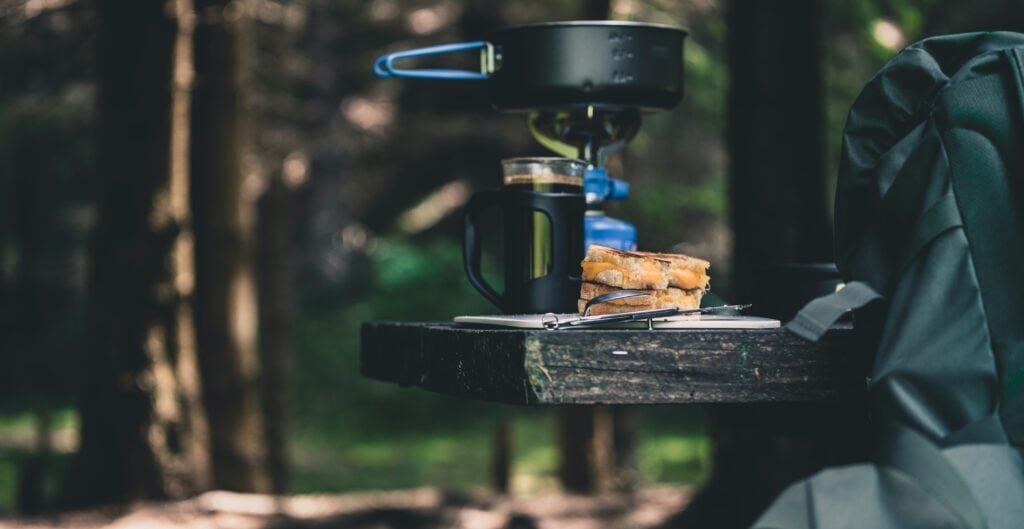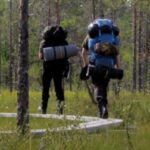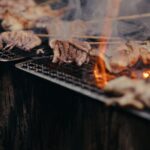Family camping trips can be fun and educational for everyone involved. However, packing food for a camping trip is something that most people find difficult. One of the most common concerns among campers is how to prepare and store their camping food for the trip.
Namely, there are many reasons why food packing can become a hassle. But don’t worry; we are here to make packing food for camping easier for you. This article will provide tips on packaging and storing camping meals properly.
Camping Tips: Factors to Consider When Packing Food for Camping
If you’re going camping, here are some things to keep in mind before packing your camping meals.
-
Storage
If you are going camping, you need to preserve your perishable foods. So, what kind of storage do you have? Do you have electric ice packs or a cool box? If you are not using electricity, do you have a shop where you can get more ice?
-
Nearby Food Shops
Are there food shops nearby? If not, pack some dehydrated food to avoid making long trips to the store whenever you need supplies. However pricey they may be, dehydrated meals are often a lifesaver in situations like these.
-
Weather
Weather is another important factor to consider when packing camping food. If the weather is hot, avoid food items that’ll melt (e.g., chocolate). Also, if you’re hardy enough to camp in cold weather, note that your food will last longer.
If the weather forecast predicts rain, ensure you have a shelter to cook under and stock up on easily prepared foods. As a tip, you can carry a tarp to create a shelter you can cook under.
-
Travel Method
If you’re car camping, you’ll have plenty of space to stock up on more food. However, if not, you can either shop for food before setting up camp or, in some cases, have foodstuffs delivered to your tent. Also, if you aren’t car camping, remember that your cool box may only hold a few foodstuffs. So, don’t go crazy when shopping.
-
Cooking Facilities
What kind of stove do you have? Are you cooking on a campfire, camping stove, or single-ring stove, or do you have other options? The type of food you bring will, of course, be impacted by your cooking method.
How to Pack Camping Meals Like a Pro
Though it may seem like a small miracle to fit all the food you need for camping into a little space, it’s rather simple. Here are great tips on how to pack and prepare for camping like a pro:
-
Always Plan Your Food
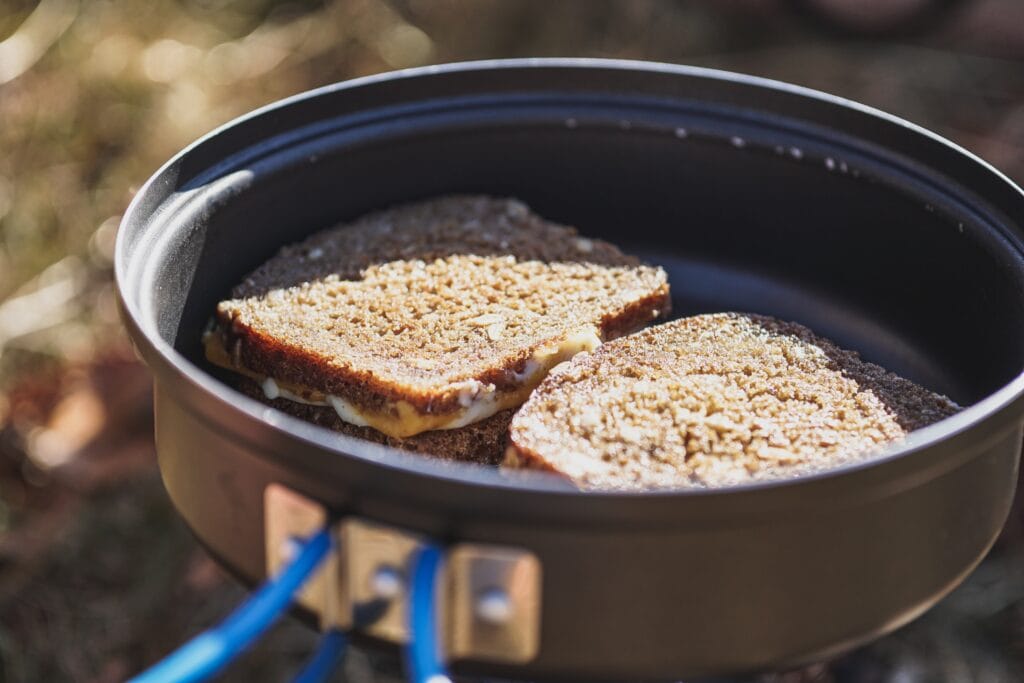 It’s smart to plan your camp meals in advance, regarding what you’ll bring and how often you’ll eat. With this, you won’t forget anything important and will pack only what is necessary.
It’s smart to plan your camp meals in advance, regarding what you’ll bring and how often you’ll eat. With this, you won’t forget anything important and will pack only what is necessary.
The best way to ensure you remember everything important is to list everything you’ll need, including food, clothing, and camping gear.
-
Freeze as Much as Possible
When packing a cooler, ice cubes and packs can occupy plenty of space. So, it’s best to freeze as much camping food as possible to maximize the limited space. If you can, try to freeze up most of your camping food the night before you pack.
Doing so can save space on ice packs and cubes because the cold foods keep the non-freezable food cold.
-
Keep your Cooking Equipment Simple
Of course, you can’t go camping without food and drinks. However, you do need to keep your cooking equipment simple. Here is simple cooking equipment you can pack to save space:
Cooking Equipment: You’ll need a teapot, a small skillet (for making breakfast), metal skewers (for hot dogs), and a large, multipurpose sauté pan. You also need two small lidded saucepans for making thickening sauces and boiling water.
Utensils: Pack a couple of wooden spoons, tongs, cutlery, and a heatproof flat silicone spatula. Wrap your utensils in tea towels and store them in a large plastic container with a lid.
Prep Equipment: For your trip, you also need a small paring knife, chef’s knife, cutting board, paper towels, vegetable peeler, mugs, a set of prep bowls, and plenty of aluminum foil. Remember to wrap your knives in tea towels.
Fuel: Remember to take a box of matches or lighter and a few newspapers to start fires. Also, ensure you buy extra fuel if you plan on using a camp stove.
Cleaning: Lastly, remember to add detergent and dishcloth to your list. You can decant the detergent into travel-friendly shampoo bottles.
-
Pack in Layers
Packing your food in layers saves time and allows you to easily access the items you plan on using first. Before leaving for your trip, getting as much prep work done as possible is important. A good packing tip is to put a layer of ice in the bottom of your cooler before you add anything else.
Next, add your raw meat or any perishable food you need to stay cool on the bottom, on top of the ice. Layer on more ice, then more food, and finally, more ice. Finish off packing with foods that don’t require as much refrigeration, such as fresh fruits and vegetables.
If you don’t have a separate cooler for your beverages, stack them last on top. Drinks don’t spoil as quickly as other food items. Plus, they are probably the first thing you’ll go digging for once you set up camp.
-
Ration Your Snacks
Stock up on some to-go snacks if you’re too busy or don’t feel like cooking a whole meal. Snack time will go by faster if everyone’s snacks are already prepared in individual zip-lock bags labeled with their names. By doing this, you can avoid wasting time on food rationing.
-
Keep Cold and Dry Foods Separate
If you want to keep your camping food edible and fresh, avoid storing your wet and dry foods together. Regarding food storage, wet and dry goods don’t do well together. Dry foods can get wet when stored together with cold and wet food since condensation can form, or ice will be needed to keep the foods cool.
Therefore, it’s important to plan ahead and keep your dry and wet foods in different storage areas. As a tip, pack your dry foods in sacks so it’s easy to store, and then get a good rubber-made storage tote.
-
Keep Your Cooler Cool
Lastly, always remember that air is your cooler’s number one enemy. Once you’re done packing everything else, cover any remaining space at the top of the cooler with a towel. Plus, keep the cooler away from direct sunlight when you get to camp. Don’t open the cooler any more than necessary, either!
Tips for Packing and Storing Perishable Foods
There won’t be any cold storage at your campsite, so ensure you pack your food safely. Choosing the right coolers for your camping trip is important, as they serve varied functions. Here are three types of coolers we recommend taking on your camping trip:
-
A Meat Cooler
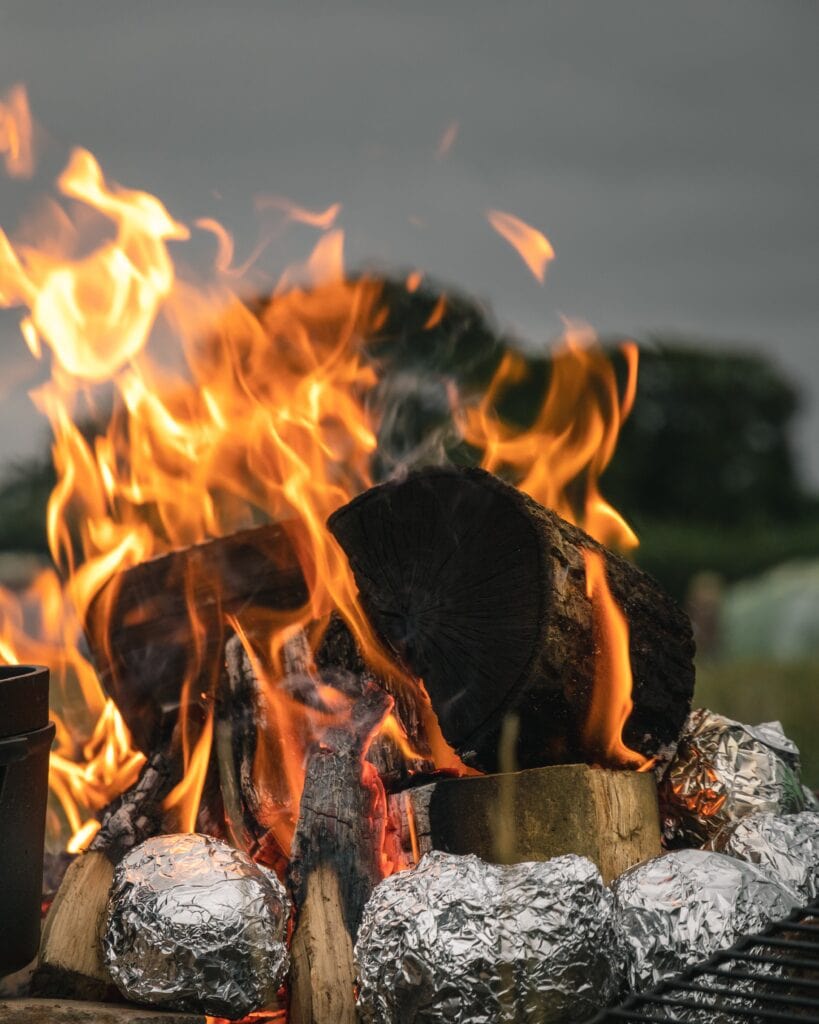
Get a heavy-duty meat cooler to store your meat products like corn beef, hamburgers, sausages, and hot dogs. Also, remember to double-wrap all meat products in plastic bags to prevent contamination.
-
An Easy-To-Access Car Cooler
This cooler is perfect for storing your sandwich fixings and snacks for on-the-go munching and lunching. Pack this cooler with fruit bars, chopped fruits, sliced tomatoes, sandwich rolls, hard-boiled eggs, nuts, ketchup, and mayonnaise. Avoid wasting money on unhealthy fast food and go for these easy-to-prep snacks instead.
-
An Everything Else Cooler
This heavy-duty cooler will contain your milk, eggs, butter, drinks, vegetables, condiments, and all the ingredients you need for your trip. In addition, you can pre-freeze large water bottles a night before your trip and store them here to keep the cooler cold.
Tips for Packing and Storing Non-Perishable Foods
Here are some tips for what to bring and how to pack your non perishables:
-
Get a Box for Your Dry Goods
Everything else stored at room temperature should go into this box. And this includes pepper, salt, bread, sugar, milk, milk powder, tea bags, cocoa, pancake mix, and others. A rubber-made storage tote will do just fine for your dry goods.
-
Get a Separate Treats Box
Everyone enjoys sweets, right? So, your chips, chocolates, cookies, candies, cereal bars, and marshmallows will go into this box.
-
Invest in a Good Wine Bag
Get a good wine bag (the kind with partitions) for carrying oil and other liquids that don’t need to be kept cold. You can use these bags to carry syrups, cordials, and olive oil bottles and wedge them between other items in the car.
-
Pack Lots of Drinks
Finally, pack plenty of water, beer, juice, and other drinks. Beverages, particularly water, are an absolute must when camping. On the other hand, ensure you pre-freeze your water bottles to get the most out of them.
Then you can put the bottles in a separate drink cooler and use them to chill your beverages. This way, you won’t have to bring as many ice packs, and the water will still be refreshingly cold when you get to camp.
Best Foods to Pack for Camping
Of course, it’s up to you to decide what foodstuffs you’ll bring to camp. But for easy packing, here are some of the best foods to take to camp:
- Bread (for making sandwiches)
- Vegetables
- Herbs and spices
- Salt and pepper
- Wraps and pitas
- Oil and butter
- Eggs
- Beef
- Bacon
- Turkey or chicken
- Tea or coffee
- Fruits
- Cheese
- Potatoes (versatile food)
- Trail mix (needs no preparation)
- Energy bars
- Marshmallows
Conclusion
Packing food for camping doesn’t have to be difficult. You can pack enough food for camping without compressing anything. We’ve already provided you with great tips on how to pack food for camping in this article.
We have curated a detailed article, so you won’t have to worry about anything once you hit the road. When you arrive at your campsite, the most difficult part will be starting the fire; but after that, the rest will be fun!

